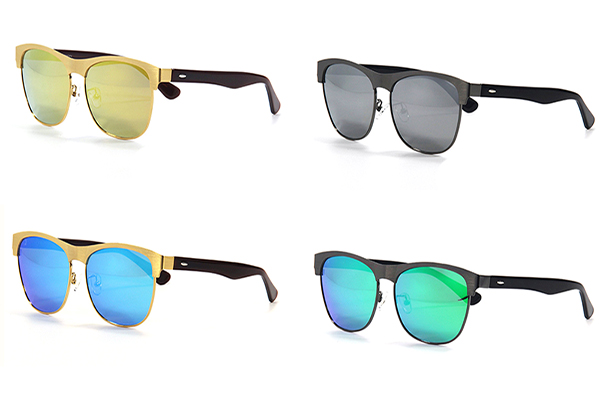News Category
Contact Us
-
Address: No 104 Lijia Road ,Henggang, Longgang,Shenzhen,China(518115)
Mob: 189 3867 9978
Tel: +86-755-2862 4881
Fax: +86-755-2862 4880
WhatsApp:+44 7719 483 678
E-mail: vip@handoptical.com
Contact: John wong
Introduction: Dragon Boat Festival holiday will soon travel, your equipment ready? When the sun shines, you need sunglasses.
Myth 1: All sunglasses can be 100% anti-uv first to understand the UV, UV wavelength of 400uv, the eye will damage the cornea and retina after exposure, resulting in heliokeratitis and corneal endothelial damage. Good sunglasses should be able to absorb or reflect ultraviolet light to block the exposure of the eyes. There are several ways to display uv-proof Sunglasses: 1. Label "UV400" : the UV isolation wavelength of the Lens is 400nm, that is, the maximum spectral transmittance below 400nm can not be more than 2% . 2. Label "UV" , "anti-UV" : that the Lens for UV blocking wavelength of 380 nm. 3. Label "100% UV absorption" : the Lens has 100% UV absorption, that is, in the UV range of the average transmittance is not more than 0.5% . In general, only those labeled above can be said to be truly protective sunglasses against ultraviolet rays
Myth 2: Polarized Sunglasses are more so-called polarized sunglasses than ordinary sunglasses, that is, in addition to the functions of sunglasses, they can also reduce and block the glare, glare, irregular reflection of objects, etc. , and smooth to the track of the optical axis into the eye visual image, so that rich layers of vision, vision more clear and natural. Polarizers are generally suitable for driving, fishing, sailing, boating, skiing and other outdoor activities. Because the polarizer lens color is generally deep, so in overcast days or indoor no need to wear, but should choose some ordinary sunglasses can be very good protection from ultraviolet rays.
Myth 3 in our daily life, sunglasses always seem to be easy to be burned by the hot sun eyes of the summer before people think of. In fact, sunglasses are not only worn in summer, the main purpose of wearing sunglasses is to block UV and shading, and UV throughout the year, that is, sunglasses can be worn throughout the year. Although the lens material of high-quality Sunglasses is special material, but also with the passage of time and aging. Incorrect wearing habits, may also damage the sunglasses, and even cause deformation, loose, reduce the use of life. Therefore, it is recommended to replace new sunglasses in 1-2 years. 5 children and the elderly are not suitable to wear sunglasses? Our default view is that sunglasses are not suitable for the elderly or children, and sunglasses are the preserve of the young. Actually no, for the elderly, wearing sunglasses is a positive way to protect the eyes. Wearing sunglasses is more beneficial to the prevention and recovery of eye diseases such as Keratitis, Retinal detachment, cataract and so on. However, color blindness, night blindness patients should not wear. Children under the age of six should not wear sunglasses. They are not yet fully developed and need more stimulation from the Sun. Wearing sunglasses will affect their visual development or form Amblyopia. The six transmittance is also called the transmittance, which is the ratio of the light flux or the auxiliary flux to the incident flux through the material or medium. The transmittance is not a measure of the quality of the glasses. Many eyewear tags will have the words 0,1,2,3,4 on them, meaning: 1. The "0" stands for Cloudy Day. 2. The "1" stands for cloudy weather. 3. The "2" rating applies to clear weather. 4. The "3" rating applies to sunny weather. 5. The "4" rating applies to snow or sea.

